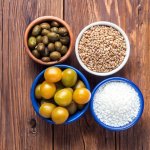auroracoor1
Active member
I just had lemon potatoes at a restaurant and although I know how to cook Greek food, somehow I have never made this!
I took my best guess (I didn't look up a recipe) and it didn't taste great. Basically, I made a Ladolemono, drizzled it on the potatoes, and roasted them.
They never really got crispy - so my next thought is that I put too much of the ladolemono.
So the next time I made them, I put less of the ladolemono. I couldn't really taste the lemon.
Next, I am going to look up a recipe, but meanwhile I am curious what you guys do to make these.
I took my best guess (I didn't look up a recipe) and it didn't taste great. Basically, I made a Ladolemono, drizzled it on the potatoes, and roasted them.
They never really got crispy - so my next thought is that I put too much of the ladolemono.
So the next time I made them, I put less of the ladolemono. I couldn't really taste the lemon.
Next, I am going to look up a recipe, but meanwhile I am curious what you guys do to make these.




